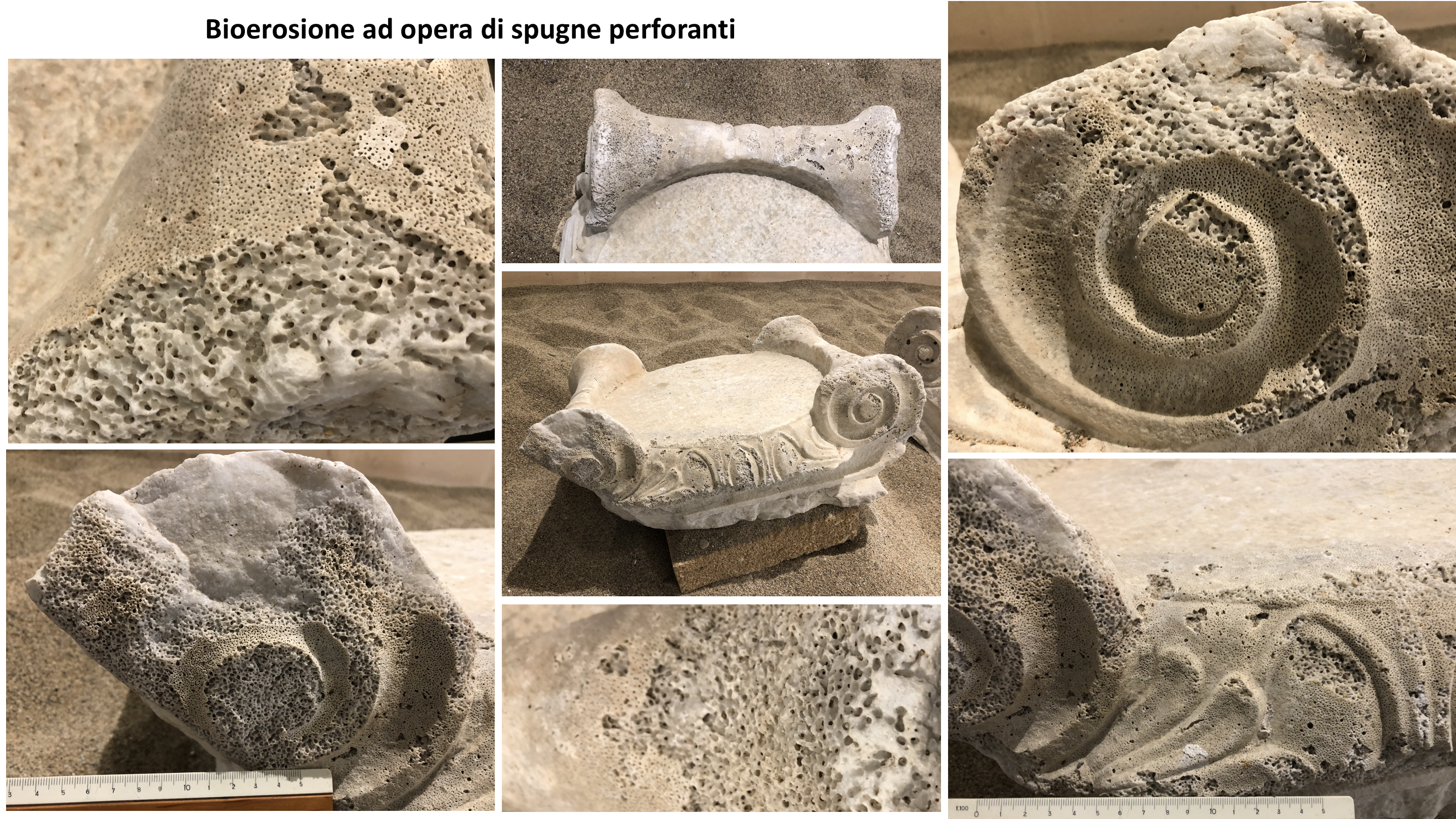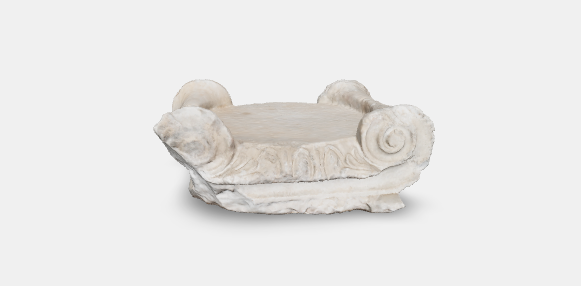Ionic capital. A part of the pulvino [impost block] and its volutes are missing; the edges of the abacus and other two volutes are chipped and the surface of one of the echinus’ sides is abraded.
The echinus is carved in a quite superficial manner, with an Ionic kyma made of three incomplete ovals contained in thin shells. The ovals on the sides are touched by half-palmettes originating from the volutes. The channel of the volutes on the lower edge is lightly concave. The laying surface of the echinus corresponds to an imaginary line that connects the volutes’ eyes on the same side, in accordance with the Hellenistic tradition.
The capital presents a diffused biological degradation that covered both the surface and the internal layers of the marble block. This alteration is visible on the external surface as a “pitting” (widespread, minute circular holes), while in the innermost layers, now visible, there are numerous cavities and tunnels. This degradation is attributable to boring sponges that have solubilised the calcium carbonate through physical and chemical processes of bioerosion. Such an action caused a loss of considerable quantities of material.


Corrado 2018, pp. 176, 191, 419-420.
Davidde B., Ricci S., Poggi D., Bartolini M., 2010. Marine bioerosion of stone artefacts preserved in the Museo Archeologico dei Campi Flegrei in the Castle of Baia (Naples), Archaeologia Maritima Mediterranea; 7: 75-115.
Pensabene P., 1978, pp. 116, fig. 13.
Ricci S., Sacco Perasso C., Antonelli, F., Davidde Petriaggi B., 2015. Marine Bivalves colonizing roman artefacts recovered in the Gulf of Pozzuoli and in the Blue Grotto in Capri (Naples, Italy): boring and nestling species. International Biodeterioration & Biodegradation (98) 89 – 100.
Ricci S., Davidde B., Bartolini M., Priori G. F., 2009. Bioerosion of lapideous objects found in the underwater archaeological site of Baia (Naples). Archaeologia Maritima Mediterranea, 6: 167-188.



